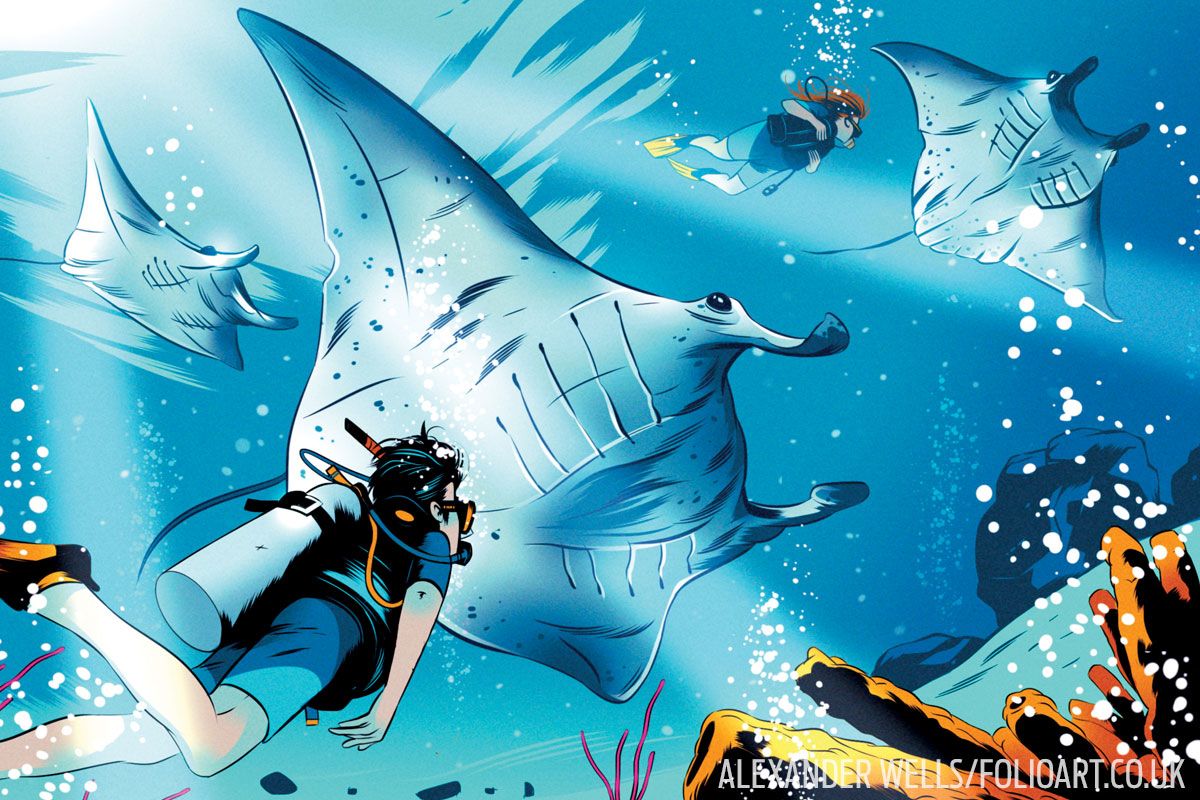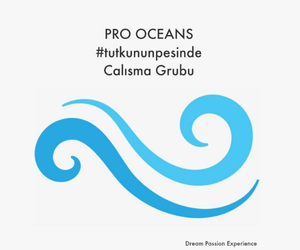Most people find that the best things in life are even better when shared with someone. So it is with diving. While we firmly believe all divers should be able to take care of themselves in and out of the water, we also believe the buddy system is a critical aspect of scuba-diving safety. From monitoring equipment and skills to providing support in case of emergencies, a good buddy is invaluable. And like other relationships in your life, it takes work to make the buddy partnership a good one. Here are our tips.
Planning a dive is more than mapping out your basic profile. A buddy team should decide who will lead the dive, review hand signals and discuss emergency procedures, such as what to do if you get separated — and you should have the conversation before putting a fin in the water.
Hand signals are the most common way to “talk” to your buddy once you’ve begun a dive. If your buddy is new, asking if he or she is OK by flashing the universal OK hand signal can be a reassuring way to let him or her know you’re paying attention. Ditto for asking your buddy how much air he or she has remaining.
“Beyond hand signals, buddies communicate by staying close and making eye contact,” says Karl Shreeves, technical development executive with PADI. “We can tell a lot b expressions, breathing patterns and body postures, often unconsciously. The more you dive with someone, the more you learn each other’s language.”
Kell Levendorf, dive accident investigator for Dive & Marine Consultants International in Florida, says the relationship that longtime buddies develop results in a kind of “mental muscle memory that dictates who leads and who follows, and allows for communicating changes in the dive plan that need to be made on the fly due to unforeseen circumstances.”
Not every underwater conversation can be conducted with a simple hand signal or by glancing at your buddy.
“Flashlights, camera lights or glow sticks are not only good for night dives,” says Liz Parkinson of Stuart Cove’s Dive Bahamas, “but they also work well on reefs to point out wildlife or get your buddy to look in your direction.”
If you find that you need to stop the dive because your buddy is puzzled by what you’re trying to tell him or her, make sure you’ve got some way to scribble a message. “A good set of wet notes or a slate is a must on every dive, regardless of unspoken communication skills,” says Levendorf.
Getting your buddy’s attention can be tough when there’s a shark cruising past or he’s preoccupied with the settings on his camera. “Carry some sort of audible device, so if your buddy isn’t looking in your direction, you can still get his or her attention,” says Jo Mikutowicz, managing partner of Grand Cayman’s Divetech.
Wet Behind the Ears?
If you’re lucky, your buddy is your BFF — maybe a spouse, friend or fellow dive-club member. You know each other’s level of comfort in the water, experience and skills, goals for the dive, and have perhaps made the same dive together countless times.
And even when a dive doesn’t go as planned, says Mikutowicz, “neither one feels pressure to push your limits, and neither one feels badly for making the other one miss out on a dive that you might not be comfortable doing.”
That’s a perfect world, one in which you and your buddy share attributes that match as perfectly as twins on the first day of kindergarten. But we divers know that’s not always possible.
“One of the remarkable things about diving is that it’s one of the few activities in which a very experienced person and a very inexperienced person can participate together and both really enjoy it,” says Shreeves. “But the more experienced and qualified diver needs to respect the less experienced diver’s limits. Failing to do so at best can take the fun out of the dive, and at worst can lead to an accident.”
Make sure you and your buddy discuss limitations or issues that could affect how you plan the dive.
“Respect limits,” says Shreeves, “and both divers can have a great time. My wife and I are looking forward to diving with my daughter when she’s old enough, but the joyful experiences we envision can’t happen if we don’t stay within all three of our limits.”
Breathe Easy, Set the Pace
Pairing up with a buddy who runs out of air while you still have half a tank can be annoying. The same goes for a buddy who races ahead as if he’s running the 40-yard dash at the NFL Combine.
Like skill level and experience, similar air-consumption and swimming rates will lead to a more-relaxed dive, but it’s not crucial as long as you communicate. “A good buddy team knows what to expect from each other, including gas use, and they check gas together routinely, ” says Shreeves.
What about the speed-demon buddy? “Diving is just like going out to dinner with a friend, and it makes it difficult when one person is a vegetarian and the other only wants steak,” says Mikutowicz. “Diving is something we all do to enjoy ourselves and see things that interest us.” Signal your buddy to slow down and stay together.
Of course, finning along at a nudibranch’s pace can also pose issues. If you’re a photographer and he or she isn’t, lingering too long in one spot can also be a problem for the buddy who’s hanging around waiting for you to take the perfect photo. When it comes to pace, some buddies just may not be compatible. Be honest, and find a new buddy if that’s the case.
The Bottom Line
In the end it comes down to trust. “In my experience, the buddies you can trust are those who stay close and communicate,” says Shreeves. “They stick to the plan. They’re not afraid to call a dive if they think it’s necessary, and they don’t argue if I do. They stay at hand when I’m task-focused, even though for the moment, all they’re doing is essentially watching me. It’s clear we have each other’s backs.”
Source: Sport Diver





